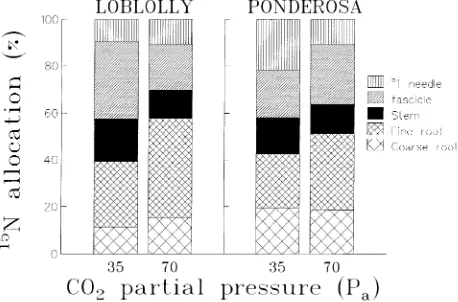Directory UMM :Data Elmu:jurnal:T:Tree Physiology:Vol16.1996:
Teks penuh
Gambar



Dokumen terkait
Elevated CO 2 increased lateral root length (20 months, trend at 4 months) and fine root length (4 months, trend at 8 and 20 months) of seedlings in the high-N treatment but not in
Clone Robusta exhibited increased height growth, leaf biomass and total leaf nitrogen content in response to elevated CO 2 , but no increase in leaf area index.. The elevated
If soil and forest floor organic matter and coarse and fine root biomass are in approximately steady state, total below- ground carbon allocation ( B c) can be estimated as the
To test this hypothesis, we compared (1) the photosynthetic acclimation of Siberian and Japanese white birch to ambient and elevated CO 2 during growth, and (2) the physiological
Total root length, dry mass of carbon and root carbon mass per unit root length for different diameter classes of roots in cores taken adjacent to the minirhizotron tube outside
Main root length, average lateral root length and lateral root index (number of roots cm − 1 root length) of Pinus pinea and Pinus pinaster seedlings exposed for 4 weeks to
perenne towards elevated CO 2 (more carbon input, no altered microbial meta- bolic behaviour and retarded decomposition of roots and root-derived material) is most interesting in
The daily gross CO 2 assimilation is allocated to respiration, growth of organs (leaves, tap root, ®brous roots) and to sugar storage. 3 shows cumulative simulated dry matter